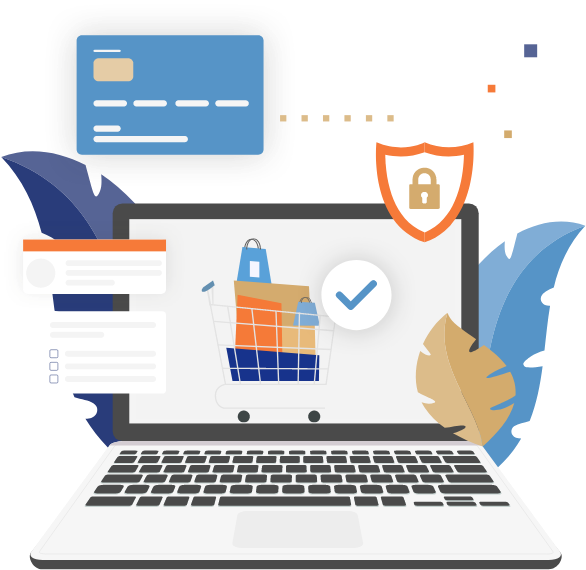In an increasingly digital world, the way we handle our finances has evolved significantly. From traditional cash transactions to checks and credit cards, the financial landscape has now embraced the convenience of digital payment systems. These systems have revolutionised how we conduct transactions and introduced a complex web of security measures to protect our financial assets. Understanding these security measures is paramount in ensuring the safety of our digital financial interactions.
Digital payment systems encompass a wide range of technologies and platforms, including mobile wallets, online banking, and cryptocurrency transactions. As digital payment systems have become an essential part of our daily lives, and with the increasing use of these systems, it is important to understand the security measures behind them. This blog article discusses the critical security measures behind digital payment systems.
Key Security Measures Behind Digital Payment Systems
- Encryption: Encryption is a vital security measure in digital payment systems. It is a process of scrambling data so that it can only be read by someone with the correct decryption key. This helps to protect sensitive information from being intercepted by unauthorized parties. It protects sensitive information, ensures confidentiality, complies with industry standards, and builds trust with customers. By implementing encryption, digital payment systems can provide a safe and secure way to make transactions.
- Authentication: Authentication is the process of verifying the identity of a user, It protects sensitive information, ensures confidentiality, complies with industry standards, and builds trust with customers. Digital payment systems use various authentication methods, such as passwords, biometrics, and two-factor authentication, to ensure that only authorized users can access the system.
- Two-factor authentication (2FA): 2FA is a security measure that requires users to provide two forms of identification in order to complete a transaction. This typically involves entering a password or PIN, as well as a code that is sent to the user’s phone.
- Authorization: Authorization is the process of granting access to specific resources or actions. Digital payment systems use authorization to ensure that only authorized users can perform specific actions, such as making a payment or accessing account information.
- Tokenization: Tokenization is a process of replacing sensitive data with a unique identifier, or token. This token can then be used to process transactions without revealing the underlying data.
- Biometrics: Many digital payment systems now incorporate biometric authentication, such as fingerprint or facial recognition. Biometrics provide a highly secure way to verify a user’s identity, as they are difficult to replicate.
- Email Validation and Authentication: Payment service providers can use email validation and authentication to detect and prevent email phishing and spoofing early on. This measure can help prevent unauthorized access to user accounts
- Two-factor authentication (2FA): 2FA is a security measure that requires users to provide two forms of identification in order to complete a transaction. This typically involves entering a password or PIN, as well as a code that is sent to the user’s phone.
- Secure Socket Layer (SSL) and Transport Layer Security (TLS): These protocols establish secure connections between a user’s device and a payment system’s server. SSL and TLS ensure that data transmitted during a transaction is secure and cannot be intercepted by malicious actors.
Get to know more about SSL and TLS:
What Makes Online Payments Secure
What Makes Online Payments Secure One concern that remains at the top throughout the digital sphere is the concern about the security of online...
In addition to the security measures employed by digital payment providers, we can also take steps to protect their own data.
- Using strong passwords and PINs: Strong passwords and PINs are difficult to guess or crack. They should be at least 12 characters long and include a mix of upper and lowercase letters, numbers, and symbols.
- Being aware of phishing scams: Phishing scams are attempts to trick users into revealing sensitive information. Users should be wary of emails or websites that ask for personal information, such as credit card numbers or passwords.
- Keeping software up to date: Software updates often include security patches that can help to protect against known vulnerabilities. Users should install software updates as soon as they are available.
- Being mindful of public Wi-Fi networks: Public Wi-Fi networks are not always secure. Users should avoid entering sensitive information on public Wi-Fi networks, or they should use a VPN to encrypt their traffic.
In conclusion, understanding the security measures behind digital payment systems is not just a matter for technologists and experts; it’s a matter of personal and collective responsibility. These systems have come a long way in ensuring the security and privacy of our financial data, but it is our shared responsibility to remain informed and proactive in the fight against cyber threats. With the right knowledge and best practices, we can continue to embrace the convenience of digital payments while minimizing the risks associated with them.
Want secure digital payment solutions for your business? Contact us!
Follow Lyra India for more updates!



